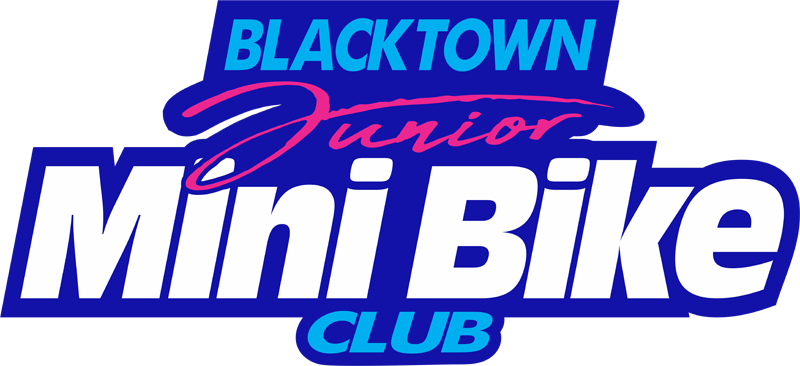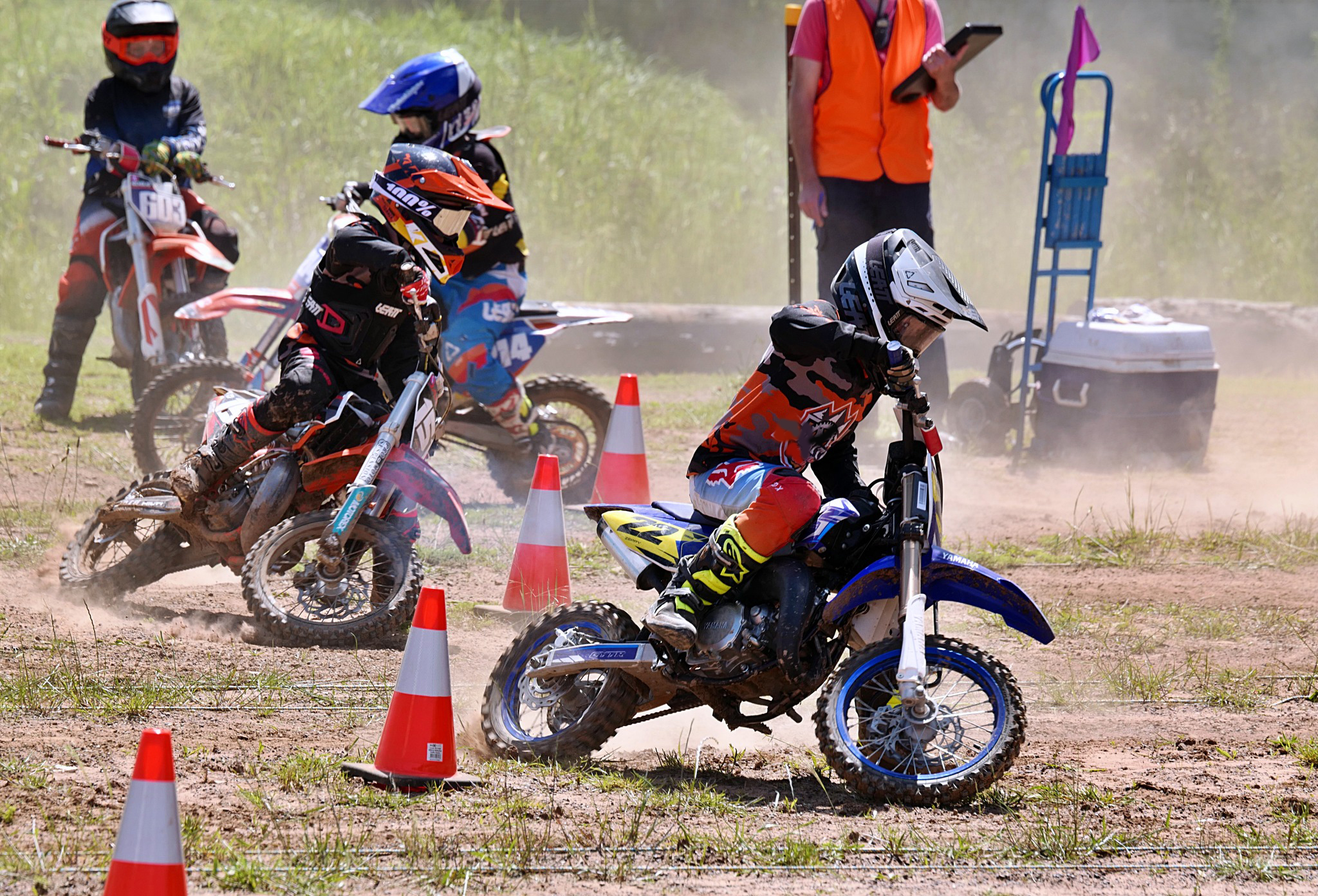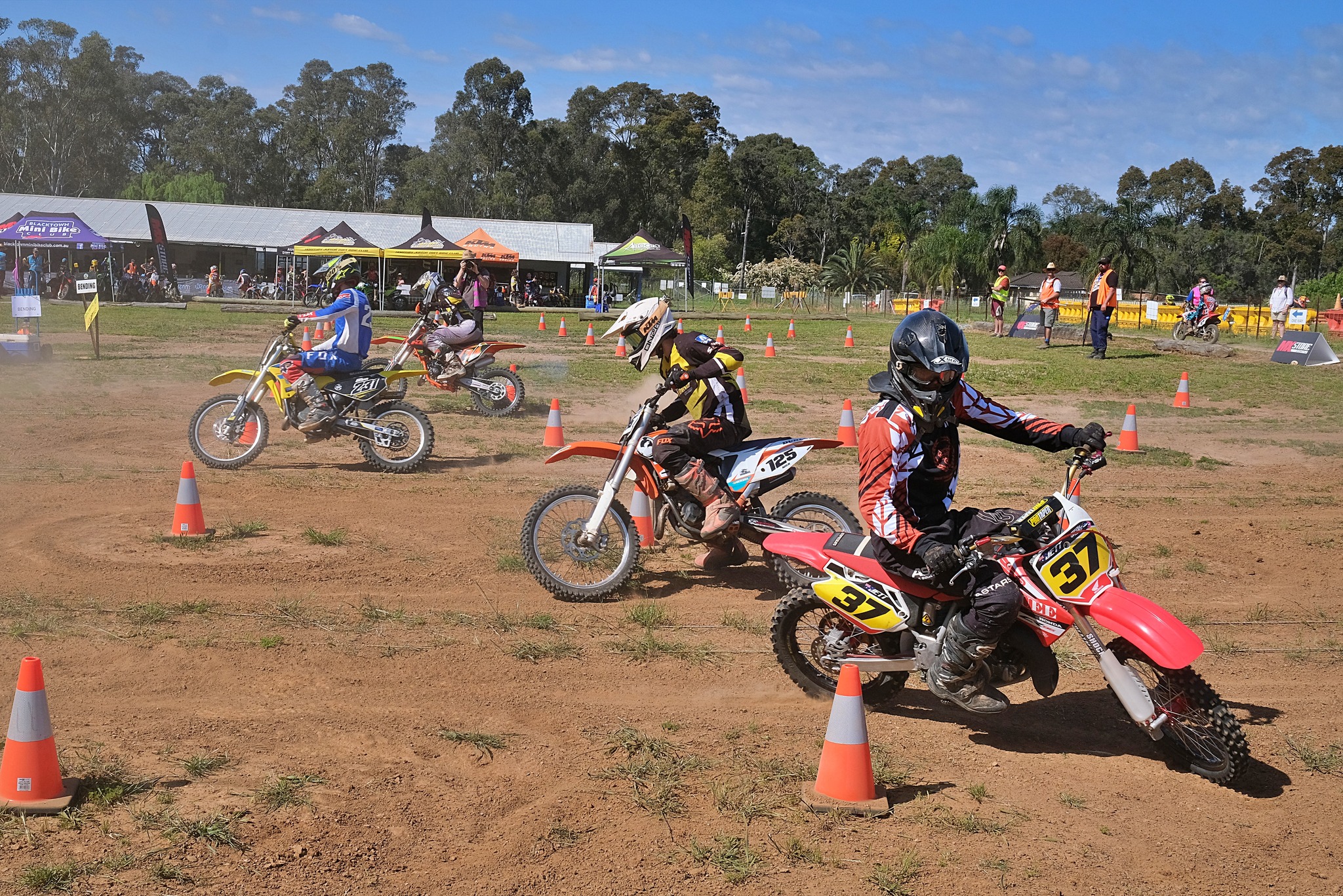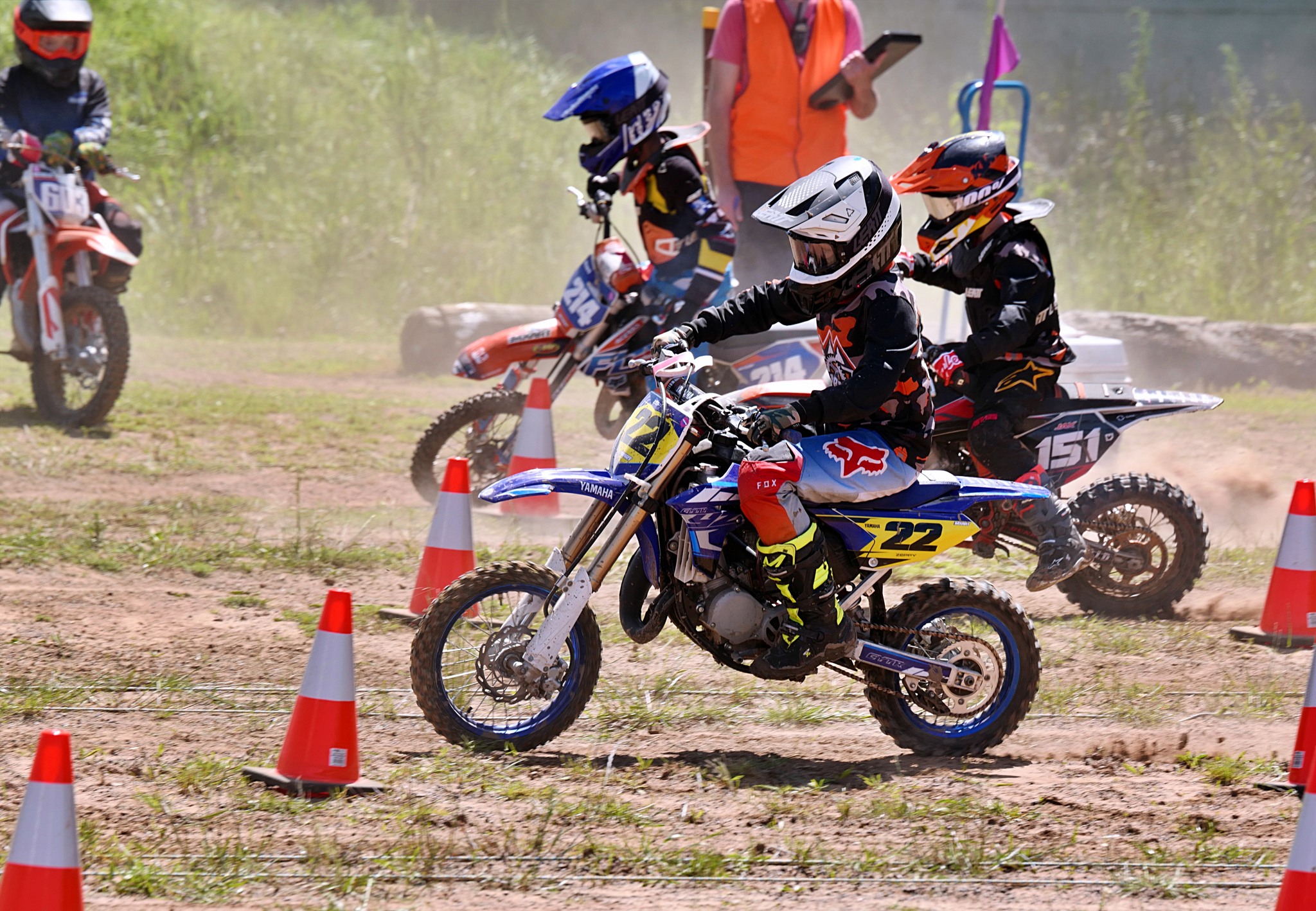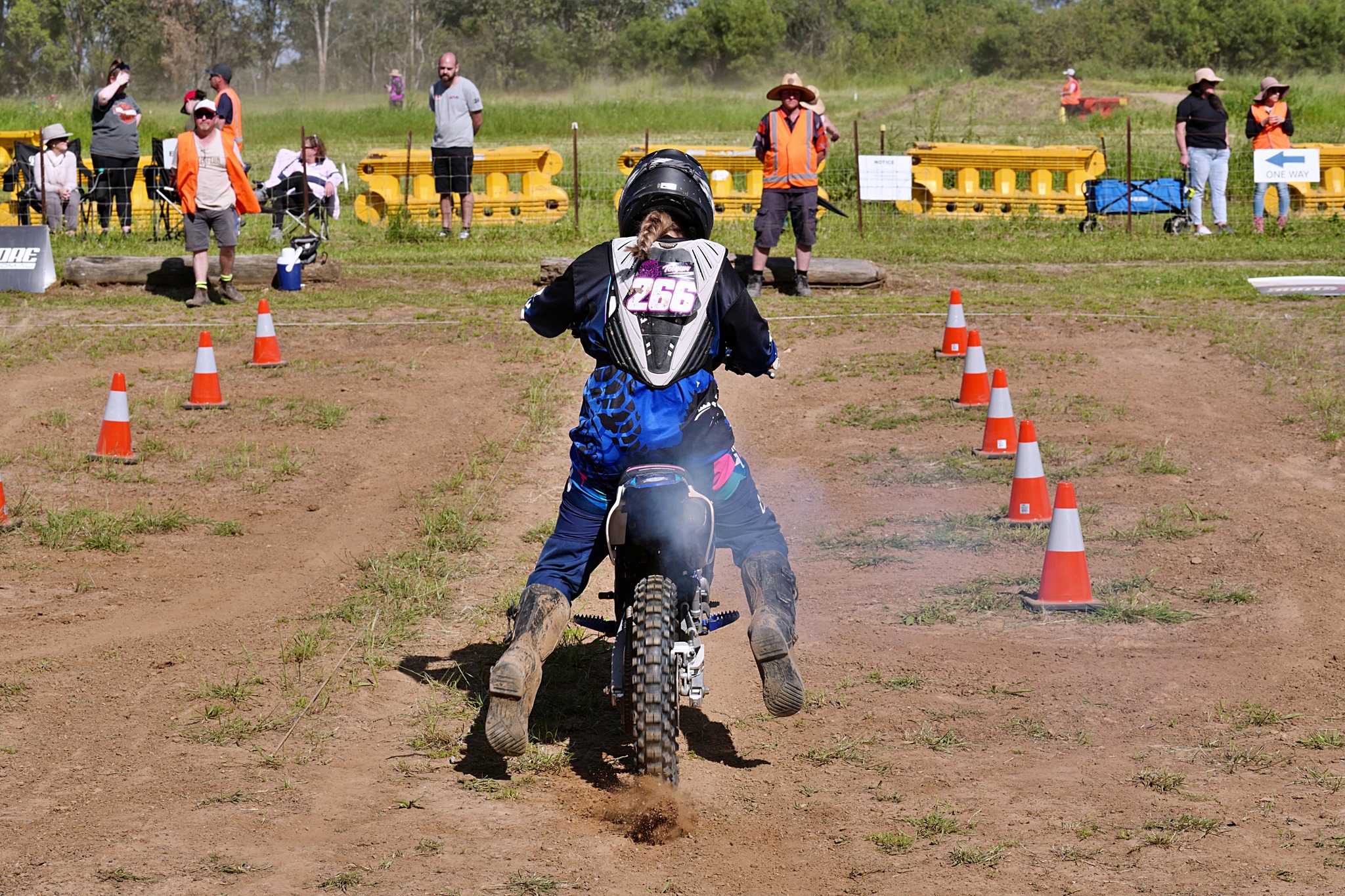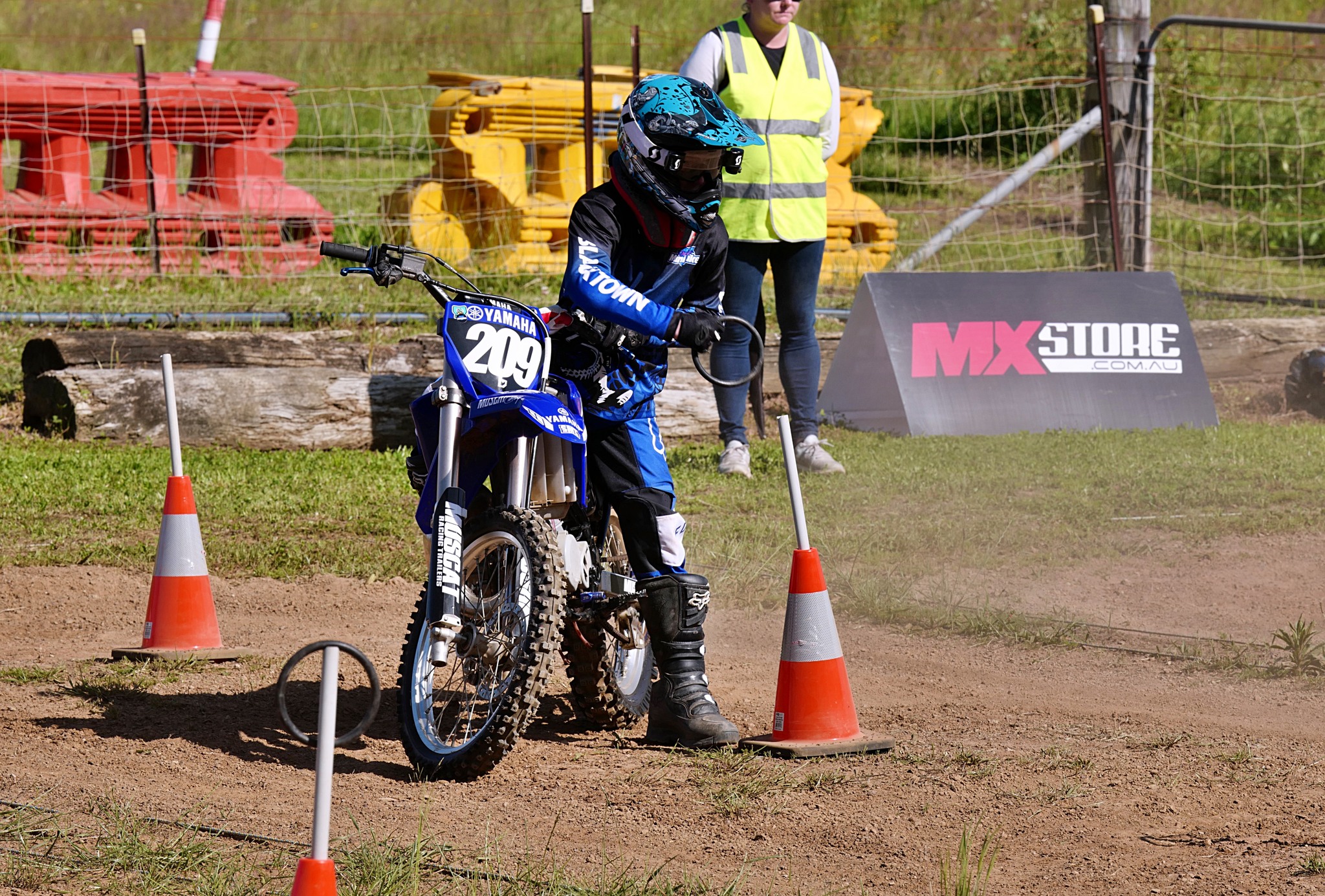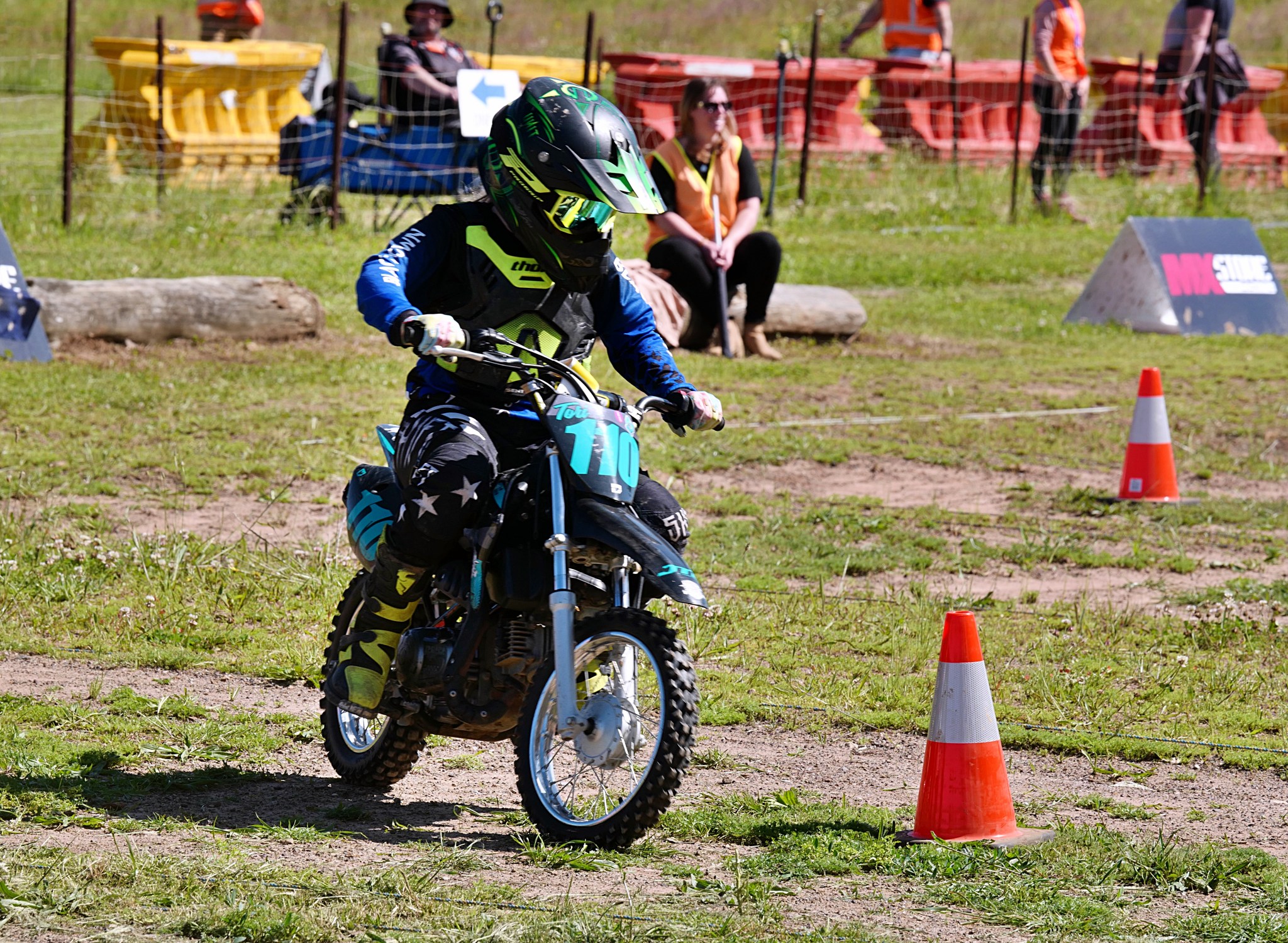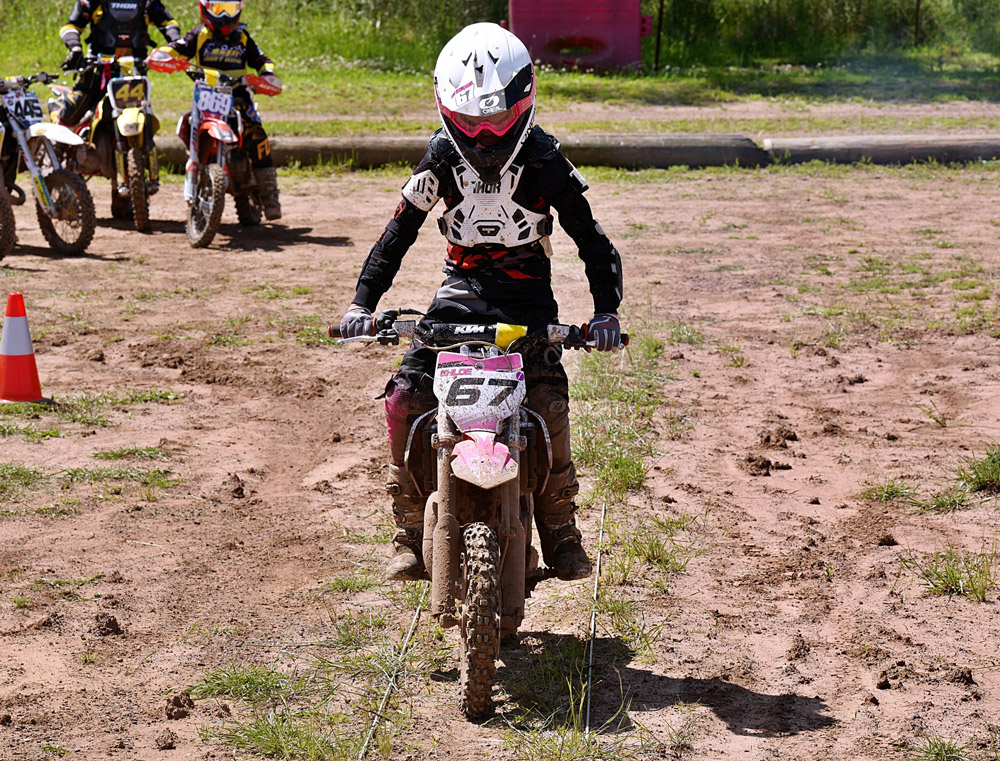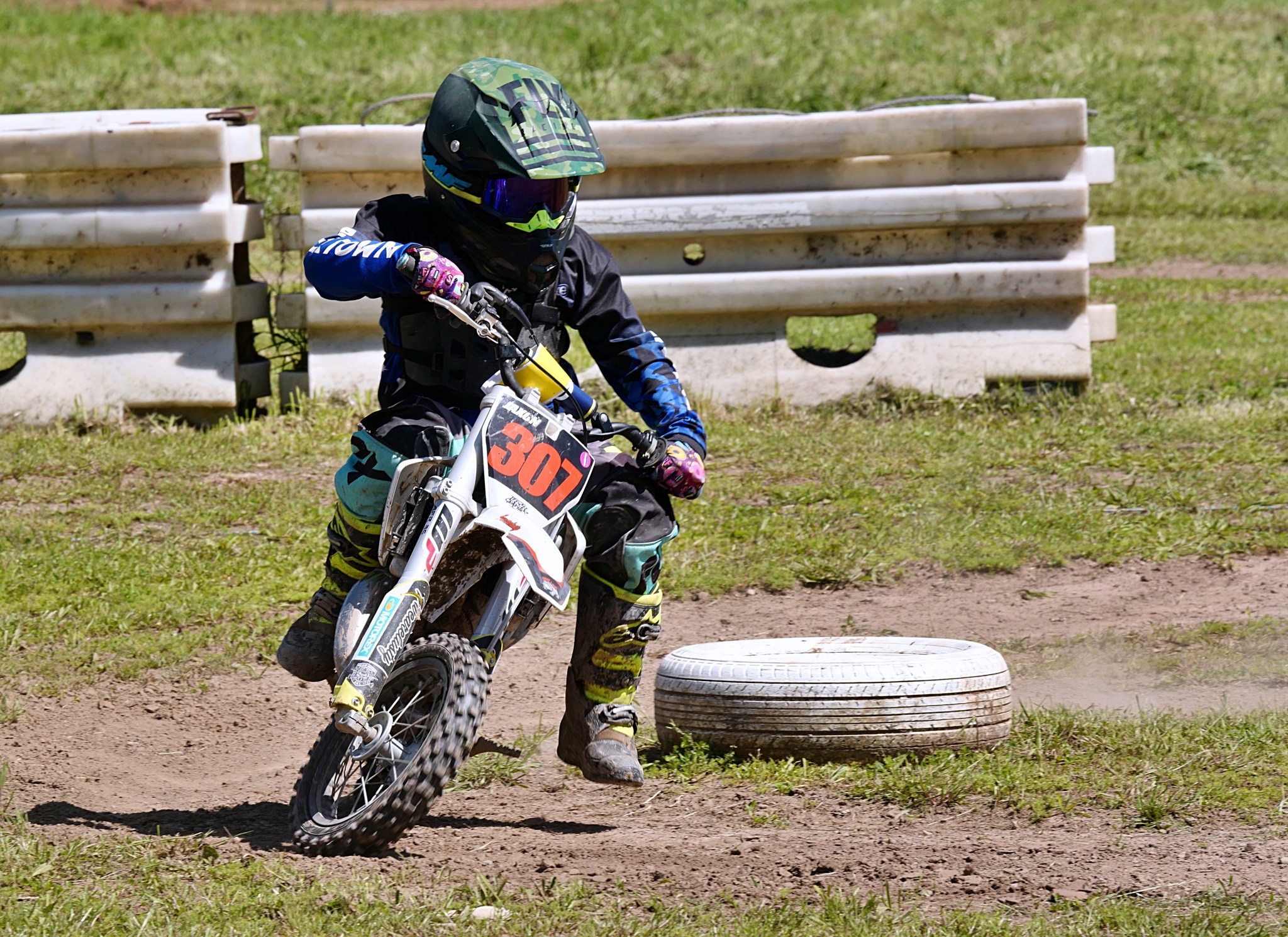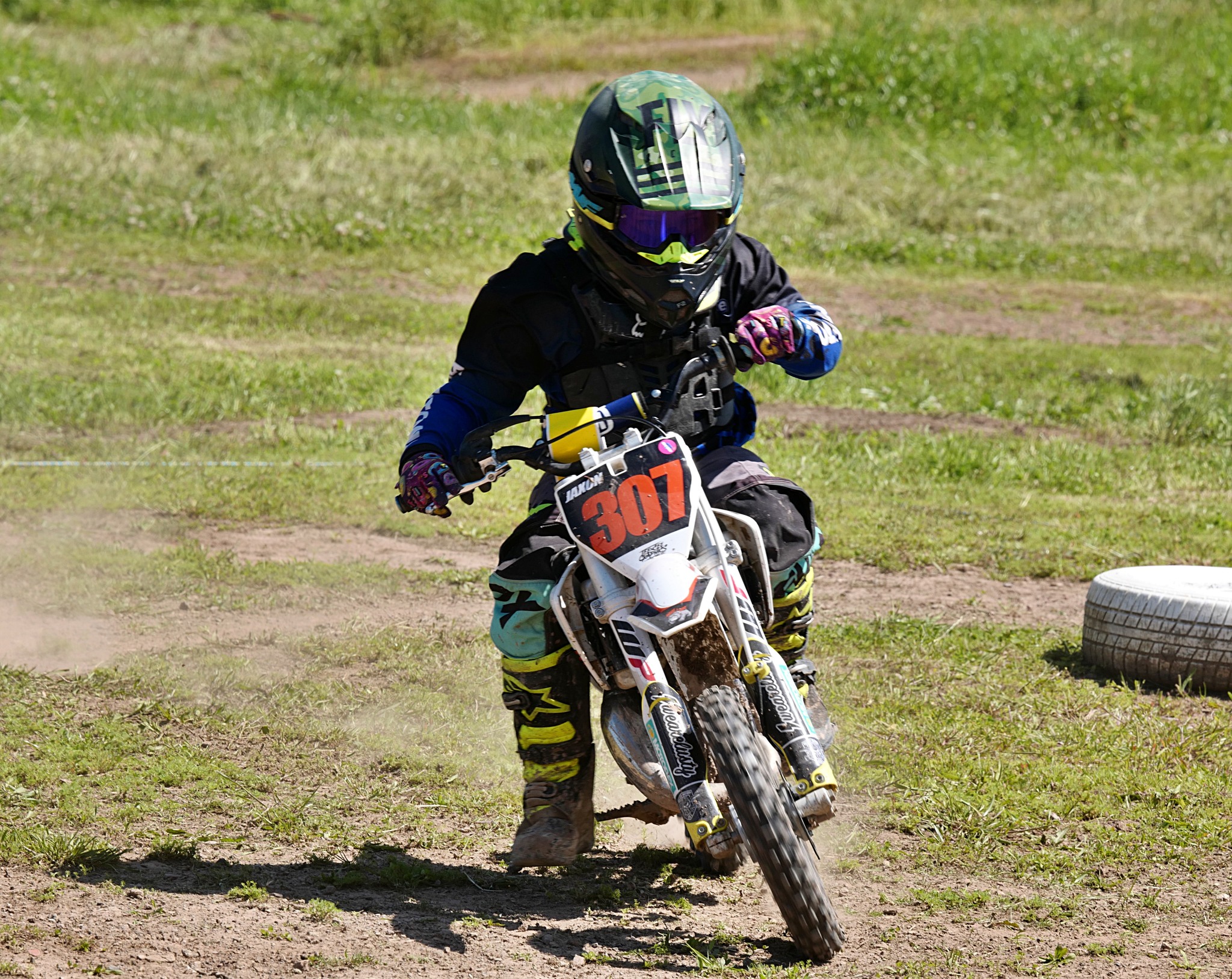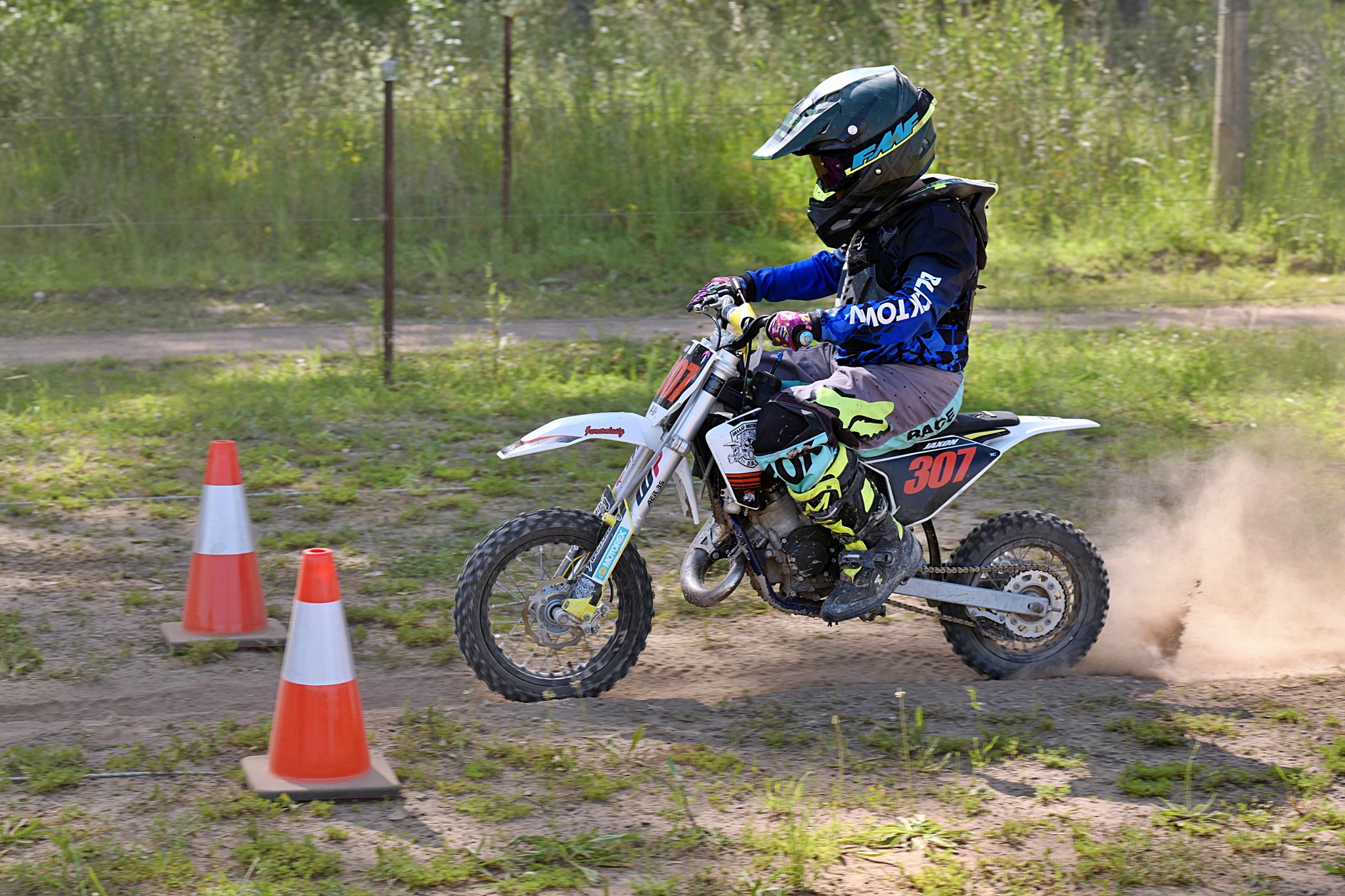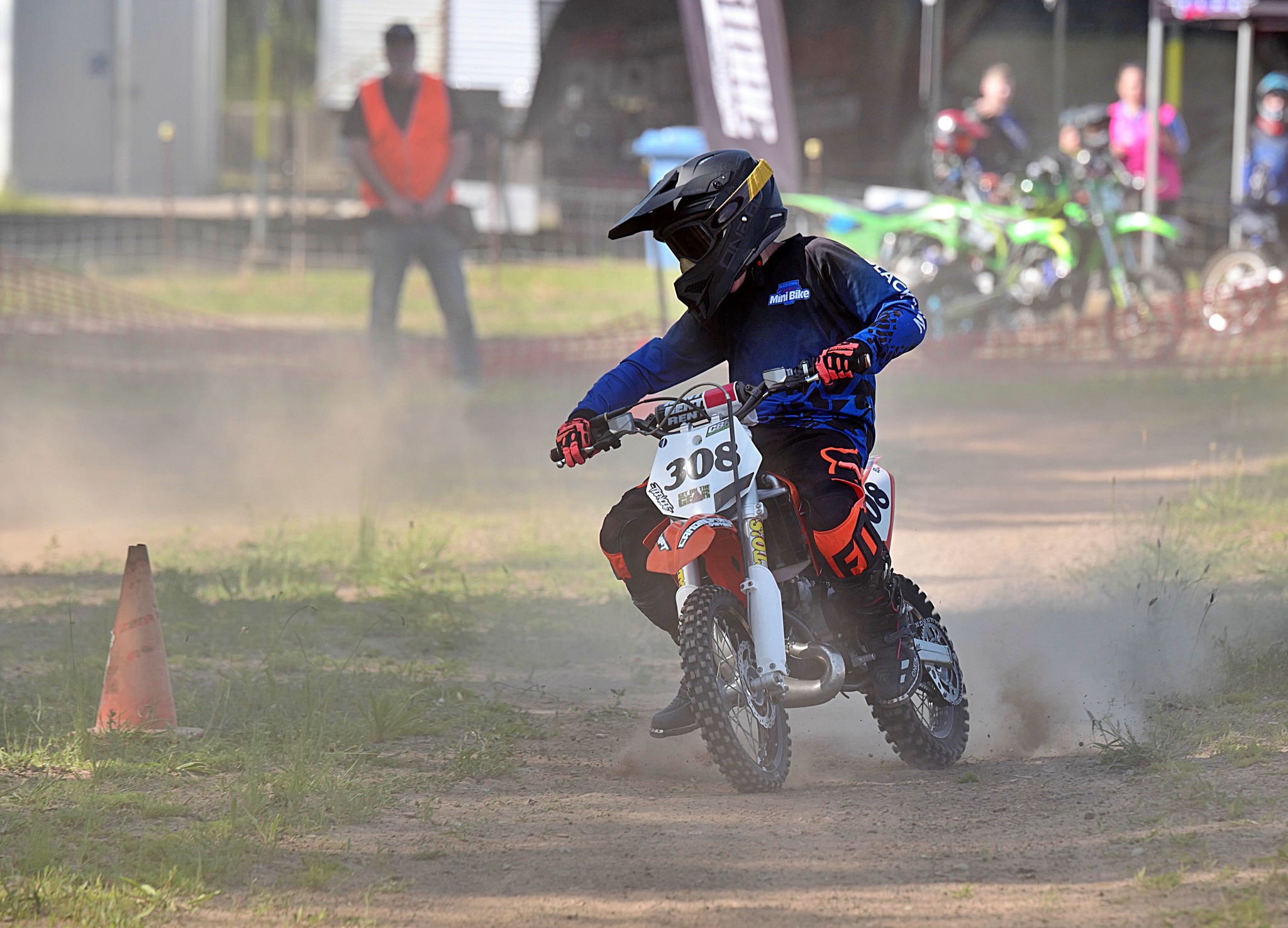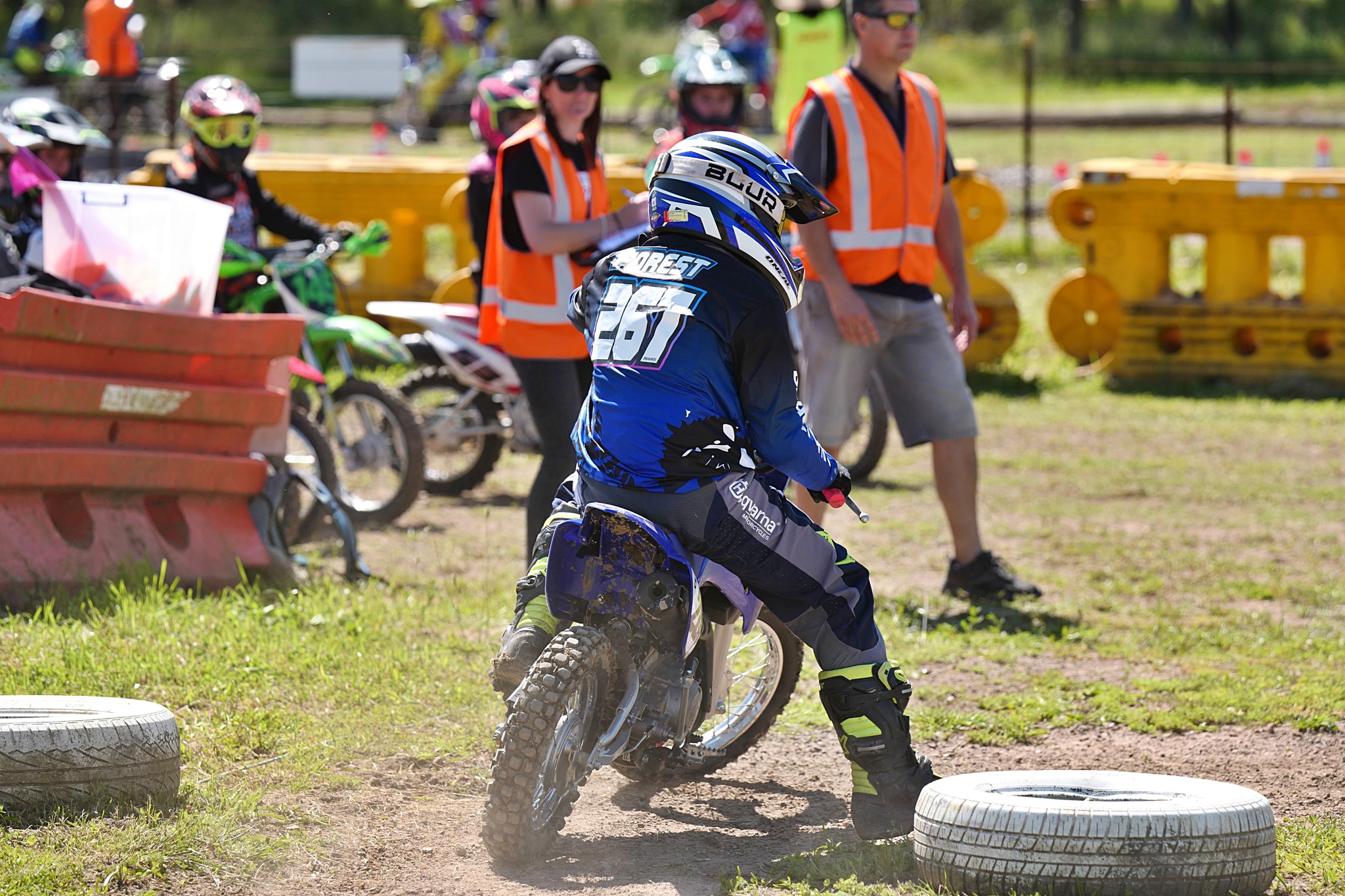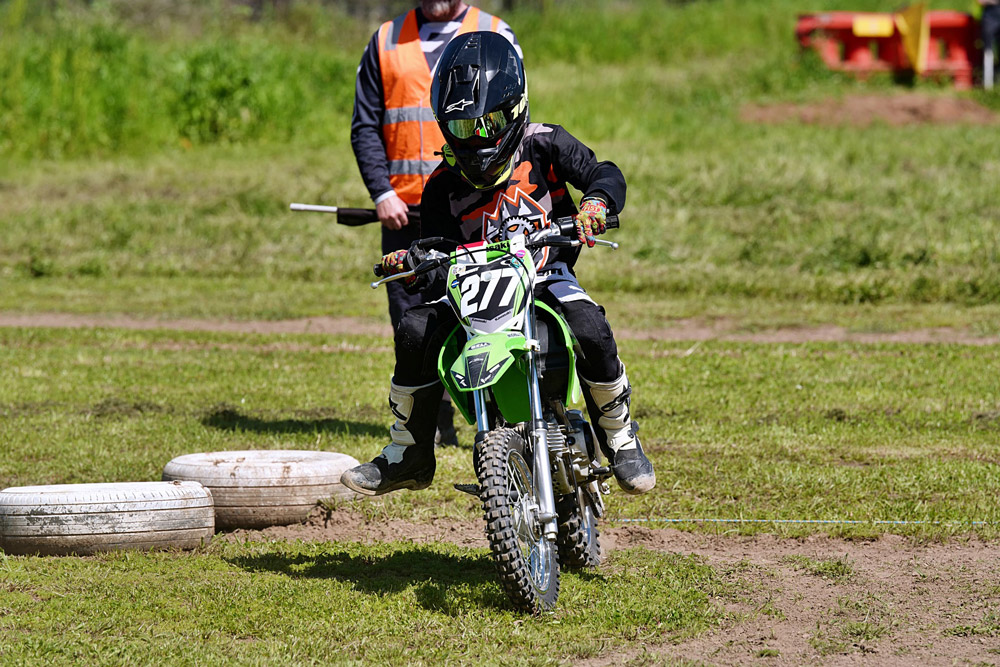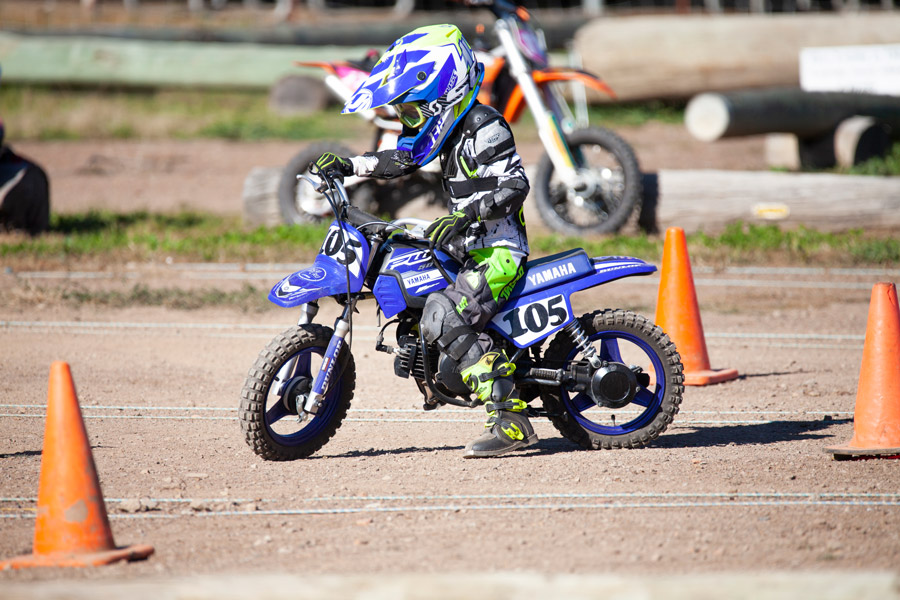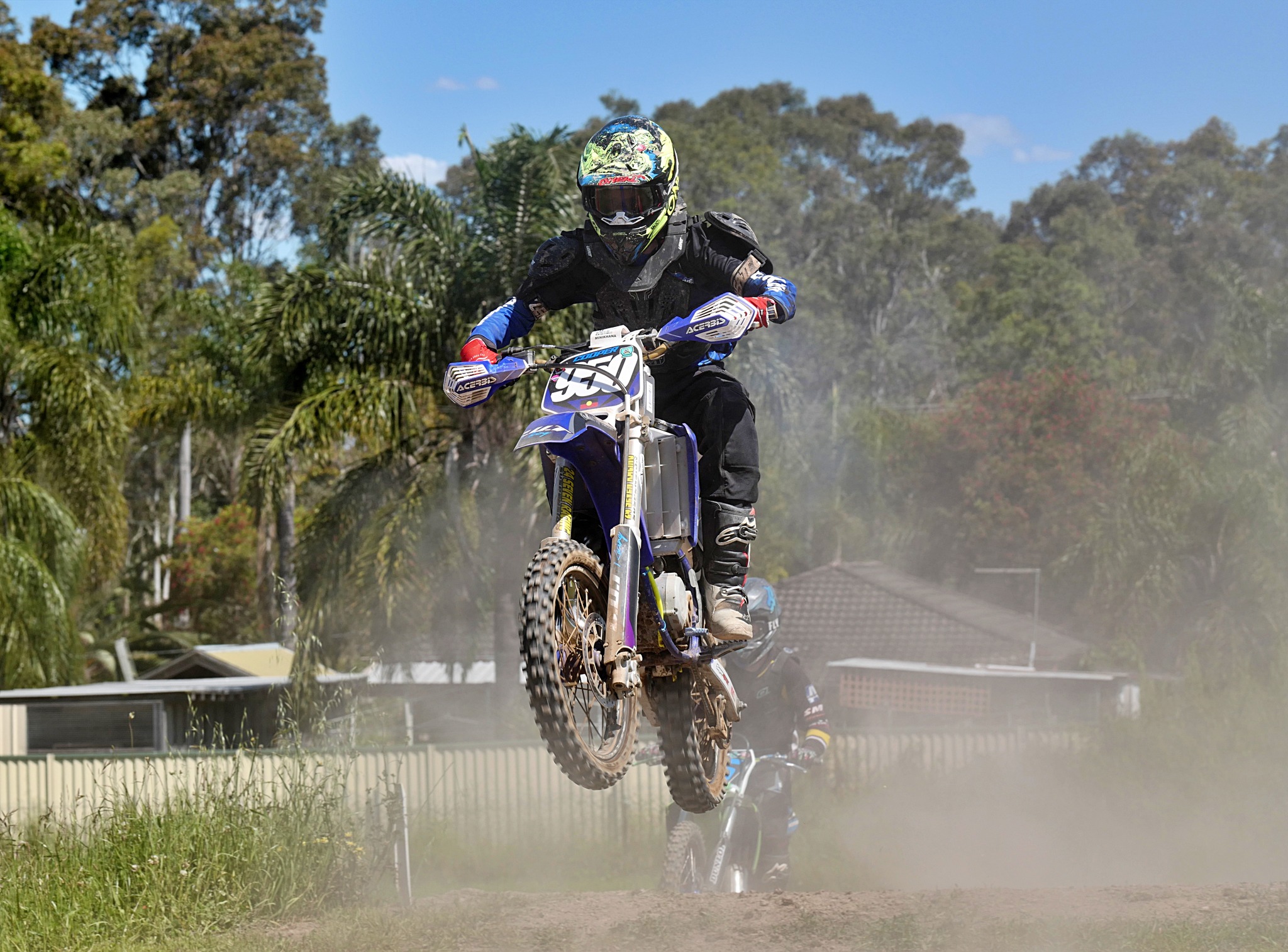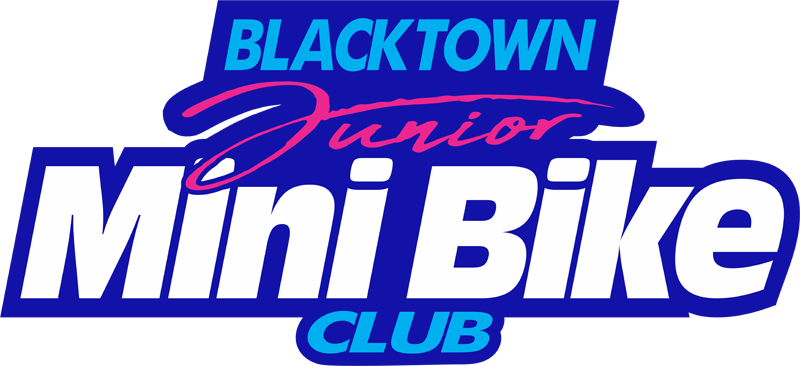RIDER INFORMATION
So you have done your Kick Start course, got your license, what’s next? Here you can find out about what your first race day looks like, scrutineering, safety gear. You name it, you will find it here.
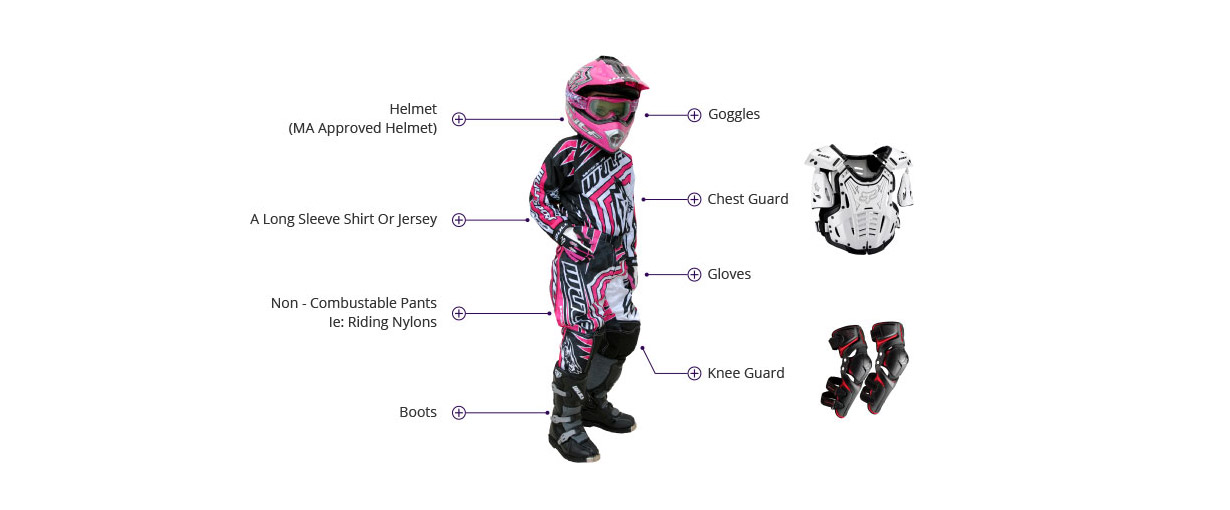
It is important for the safety of the rider that all gear is well maintained and in good working order. Helmets must have a functioning chin strap, no obvious cracks or gauges, and cannot have stickers or action camera mounts stuck on them. It is not mandatory for kids to wear elbow or knee guards, however it is highly recommended.
Looking after your bike and always maintaining it is very important.
Safety is number one at Blacktown Junior Minibike Club. This means every minibike must pass scrutineering before you can ride. Making sure it is always cleaned and regular maintenance is performed after riding will help your bikes performance and reliability.
Our Scrutineers on the day will go over each bike, checking that is in a safe and ridable condition. Use the list on the right as a guide to know what will be checked.
NOTE: Your bike and gear MUST pass scrutineering or you CANNOT RIDE.
- Overall bike condition is good, no loose or broken plastics or parts
- Grips are intact and handle bar ends are blocked so you cannot push a screwdriver in
- Brake lever and foot control are fully functional
- Foot pegs spring back freely
- Wheel bearings are good and have NO sideways movement or wiggle
- Throttle springs back and doesn’t stick
- Helmet is checked for Australian Standards tag, NO cracks, No stickers, No GoPro mounts
NOTE: Once you bike has been scrutinised, it is then parked int he pits and cannot leave the pits until the end of the day. If it leaves the pit earlier it will not allowed to be ridden until it can be re-scrutinised.
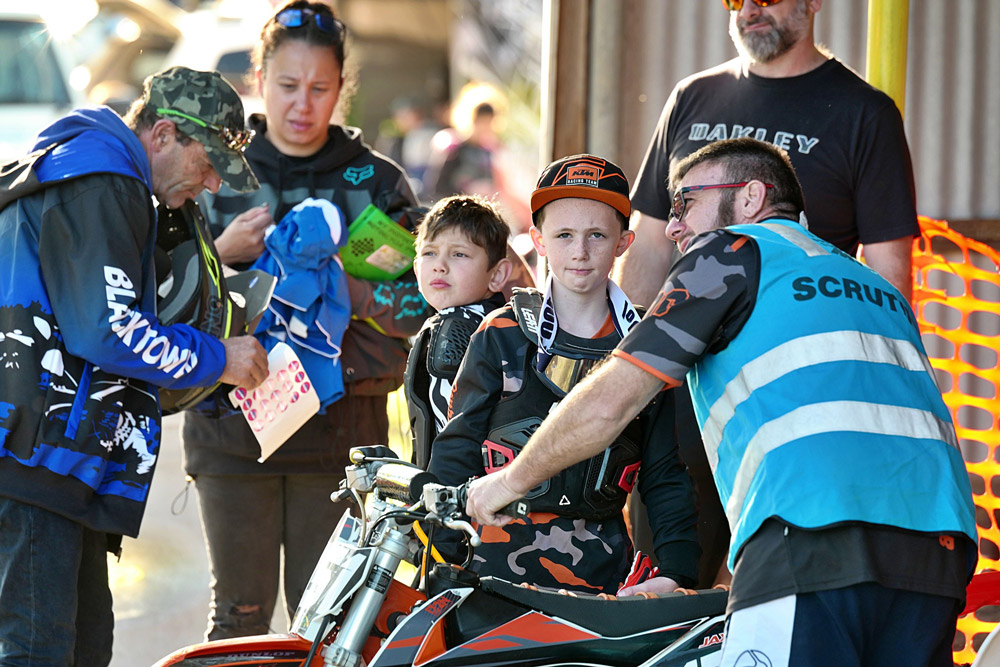
Riding within your abilities instills confidence on the bike
Riders are divided into different classes depending on the size of the bike they ride and their age. This ensures that riders are on the appropriate size bike for their age, size and skill set. When you begin your minikhana journey, you automatically start in ‘C Grade’. Each year you race, and depending on how you have progressed you move up A grade. It is important that all riders feel comfortable riding within their limits and not pressured to compete against faster, more experienced riders. At our club, we run 2 groups – Group 1 for experienced riders (~A Grade) and Group 2 for our newer members.

Not every bike of a certain engine capacity can be used. If in doubt, reach out to us and wqe can advise if the bike you have (or are looking at) will fit into one of the approved categories.
How do you get a Rider Number?
The next thing you need is a race number for your bike’s number plates and your rider jersey. If you have a favourite number in mind that’s great. Just remember though that it could already be taken by another club rider and numbers cannot be shared by multiple riders. So it is a good idea to have a couple of numbers just in case. Numbers 1-5 are reserved for club champions and not available.
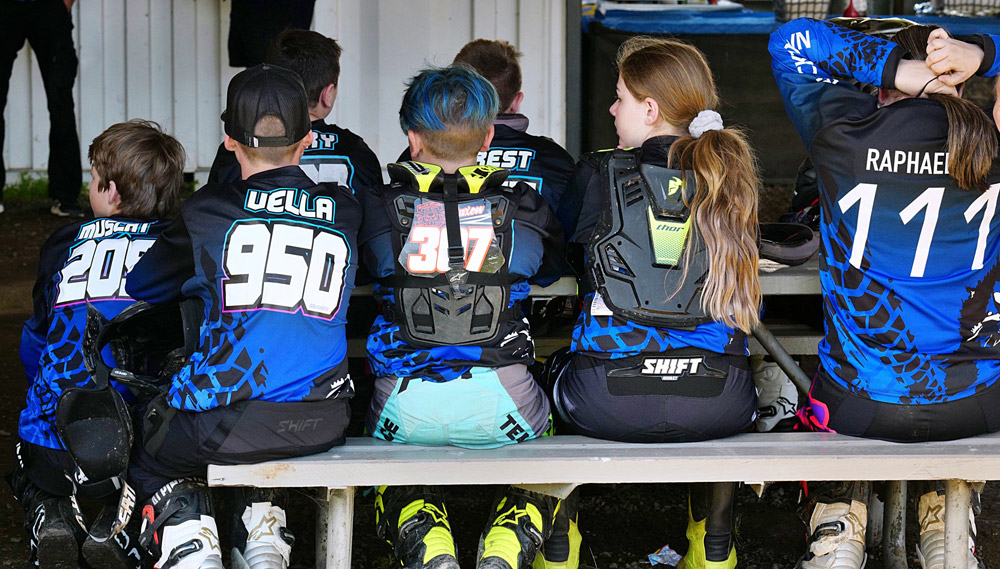
There are plenty of great events to teach on how to be a better rider.
There are 17 events in Minikhana. All these events are specifically designed to help young riders learn how to control their minibike. From slow events to help teach balance, tight space turning events to help rider learn control and racing on the Minicross track where kids learn to manage speed and jumps. Please read the brief descriptions below.
NOTE: Each event has specific rules and it is important you know and understand them before you compete. All event rules are found in the Manual Of Motor Sports or MOMS. To view them, visit Motorcycling Australia’s website by clicking the link below.
MINICROSS
Minikhana's version of motocross all about racing on the track. Here riders learn how to do race starts, corner at speed and of course hit those jumps. Races are controlled and have up to 8 riders per race. This is where all the learning from the other events can come together to teach kids how to ride and race their minibikes.
MOMS
Remember to download and read all the rules for every event in the MOMS so you know exactly what to do and what not to do in each event.
View MOMS HereOur standard club days consist of both coaching and competition. We normally aim for at least 6 different events per day.
Each class of bikes (bike sizes) is in a group and taken to each event. After a period of coaching/practice, a competetive event is run before the groups move to the next event. Points accumulated for each event are used for club awards at end of year.
At the end of the day, riders are free to practice events and gain additional one-on-one coaching.
Gates open: 8:00AM
Sign on & scrutineering open: 8:15AM
Sign on & scrutineering close: 9:15AM
Rider briefing: 9:15AM
Riding start: At conclusion of rider briefing.
Lunch: 12:00PM – 12:45PM
Riding finish: 4:00PM
